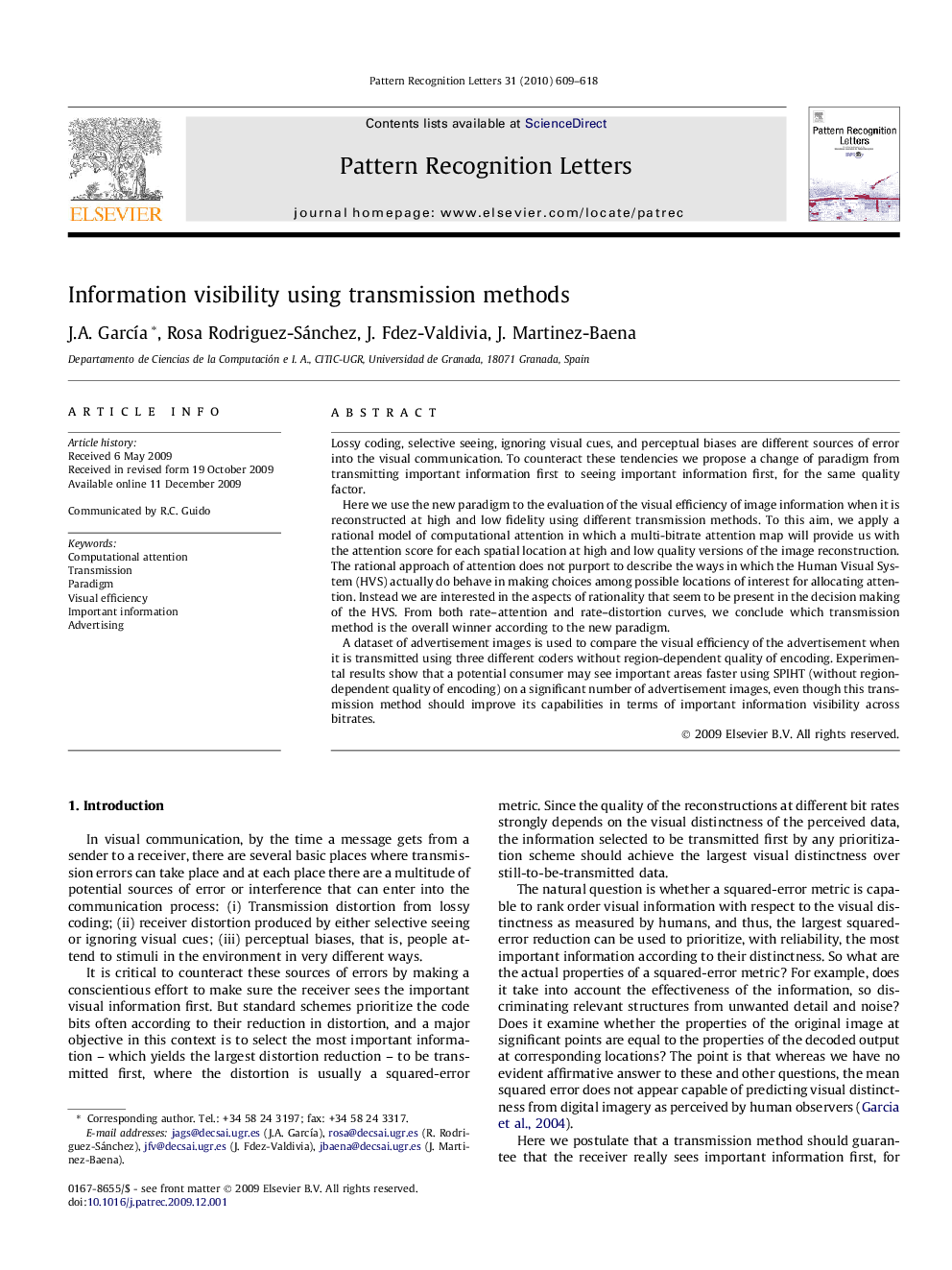| Article ID | Journal | Published Year | Pages | File Type |
|---|---|---|---|---|
| 534763 | Pattern Recognition Letters | 2010 | 10 Pages |
Lossy coding, selective seeing, ignoring visual cues, and perceptual biases are different sources of error into the visual communication. To counteract these tendencies we propose a change of paradigm from transmitting important information first to seeing important information first, for the same quality factor.Here we use the new paradigm to the evaluation of the visual efficiency of image information when it is reconstructed at high and low fidelity using different transmission methods. To this aim, we apply a rational model of computational attention in which a multi-bitrate attention map will provide us with the attention score for each spatial location at high and low quality versions of the image reconstruction. The rational approach of attention does not purport to describe the ways in which the Human Visual System (HVS) actually do behave in making choices among possible locations of interest for allocating attention. Instead we are interested in the aspects of rationality that seem to be present in the decision making of the HVS. From both rate–attention and rate–distortion curves, we conclude which transmission method is the overall winner according to the new paradigm.A dataset of advertisement images is used to compare the visual efficiency of the advertisement when it is transmitted using three different coders without region-dependent quality of encoding. Experimental results show that a potential consumer may see important areas faster using SPIHT (without region-dependent quality of encoding) on a significant number of advertisement images, even though this transmission method should improve its capabilities in terms of important information visibility across bitrates.
